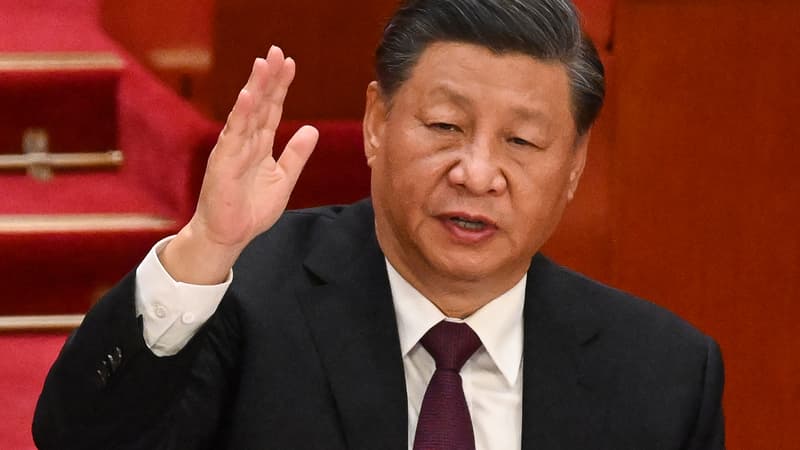China saw its growth accelerate in the second quarter, according to official figures published on Monday, which however mask the difficulties of the world’s second largest economy, faced with a difficult economic situation and record youth unemployment.
In the second quarter, the gross domestic product (GDP) increased 6.3% year-on-year, according to the National Bureau of Statistics (BNS). However, this growth rate, which would be the envy of most major economies, is well below analysts’ expectations (7.1%).
a misleading number
If this data seems misleading, it is because the comparison is still being made with the same period a year earlier: in 2022, growth had been modest in the second quarter (+0.4%), weighed down to a large extent by the confinement of the economic capital Shanghai. .
On the other hand, from one quarter to the next, on a more realistic basis for comparison, the growth of the Asian giant has slowed to 0.8%, after an increase of 2.2% in the January-March period. The post-Covid recovery at the beginning of the year, which is still taking time to materialize in certain sectors, has tended to peter out in recent months.
“A complex and difficult international situation”
“In the second quarter, this momentum lost steam due to a fall in global demand for (Chinese) goods that weighed on exports, the weakness of the real estate sector and generally insufficient domestic demand,” says economist Erin Xin, from the bank HSBC.
The Chinese economy faces “a complex and difficult international situation, and difficult tasks for the reform, development and stability” of the country, a SNS spokesman, Fu Linghui, admitted to the press.
The unemployment rate for Chinese youth ages 16 to 24 hit a new record in June, at 21.3%. The general figure is stable from one month to the next (5.2%) but only takes into account the unemployed registered in the large cities.
A drop in household consumption.
Retail sales, the main indicator of household consumption, experienced a further drop in June. The indicator certainly rises in a year (+3.1%), but this rate is much lower than that of May (12.7%).
“Consumption remains a driver of the recovery,” economist Erin Xin of HSBC bank told AFP. “In certain sectors, particularly services, the recovery has been particularly strong” despite spending being “weaker” than before the pandemic, Ms. Xin qualifies.
An eminently political official
Rare improvement among the indicators published on Monday: industrial production rose in June (4.4%), against 3.5% in the previous month. Analysts expected a more moderate rate (2.5%) for this indicator, which gives an overview of activity in the industrial sector.
The official growth figure for China, eminently political and subject to prudence, nevertheless continues to be highly scrutinized given the weight of the second largest economy in the world. China is aiming for growth of around 5% this year, a target that could be hard to achieve, however, Chinese Premier Li Qiang has warned.
We must “be psychologically prepared to see other signs of serious deterioration in the Chinese economy,” warn analysts at SinoInsider, a US-based China specialist firm. And note that the real estate sector, for a long time the engine of the Chinese economy, continues to be plunged into a crisis, which threatens the survival of developers. Therefore, we must “be skeptical of official data,” according to SinoInsider.
Rejection of a recovery plan to limit indebtedness
To stimulate activity, the central bank has made several rate cuts in recent weeks, at a time when many economists are more in favor of a stimulus package. Currently, the authorities are in favor of specific measures and refuse to launch such a plan, which would deepen the debt.
New measures are to be expected on a case-by-case basis in terms of “taxes, for housing and consumption,” anticipates economist Lisheng Wang, of the US investment bank Goldman Sachs.
Source: BFM TV


